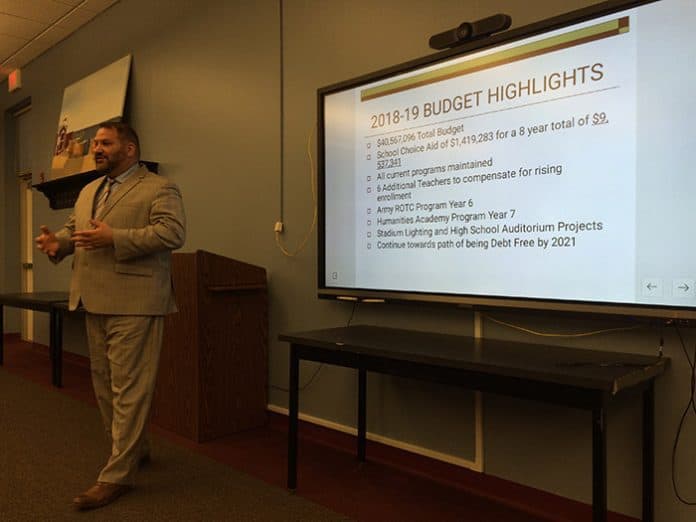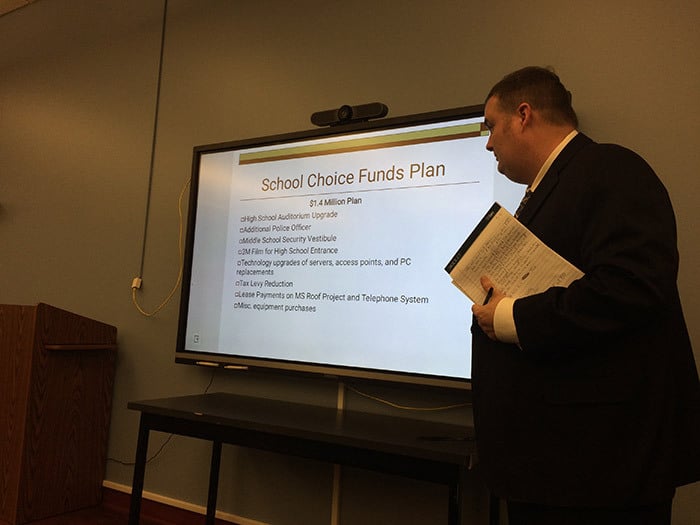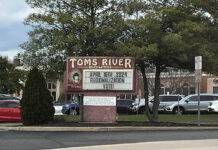
BERKELEY – Officials say that increasing enrollment is one of the main causes of the proposed increase to the Central Regional School District budget.
The total budget would be $40,567,096, an increase of $1,330,886 over this year’s $39,236,210.
The amount to be raised by taxes would be $33,006,880, an increase of $1,303,884 from this year’s $31,702,996.
Central Regional is made up of five sending districts, each affected differently by the budget.
Berkeley: For the average home, valued at $200,100, the tax rate would increase 3 cents per $100 of assessed valuation, from 43.6 cents to 46.6 cents. It would amount to an increase in taxes of $60.03, from $872.44 to $932.47.
Island Heights: For the average home, valued at $386,200, the tax rate would increase by 4.5 cents per $100 of assessed valuation, from 30.9 cents to 35.4 cents. It would amount to an increase in taxes of $173.02, from $1,193.36 to $1,366.38.
Ocean Gate: For the average home, valued at $200,600, the tax rate would decrease by .6 cents per $100 of assessed valuation, from 44.1 cents to 43.5 cents. It would amount in a reduction in taxes by $12.04, from $884.65 to $872.61.
Seaside Heights: For the average home, valued at $224,300, the tax rate would decrease by 1.4 cents per $100 of assessed valuation, from 43.1 cents to 41.8 cents. It would amount in a reduction in taxes of $30.28, from $966.73 to $936.45.
Seaside Park: For the average home, valued at $549,964, the tax rate would decrease by 4.3 cents per $100 of assessed valuation, from 41.7 cents to 37.4 cents. This would amount in a reduction in taxes of $234.28, from $2,293.35 to $2059.07.
The difference between each town has to do with two factors: property values and enrollment, business administrator Kevin O’Shea said. Berkeley’s equalized ratables went up 2.5 percent, while Island Heights increased 5.2 percent. This is why those two towns saw increases, while the other towns saw decreases.
O’Shea pointed out that the tax levy has increased by 1.97 percent over the course of the last three budget years, while enrollment has increased by 2.97 percent.
“If our projections for next year are correct, our enrollment will have increased by nearly 200 students within 3 years,” he said. “In order to maintain a good educational structure and maintain our ideal class sizes, we felt it was imperative to put additional teaching positions into the budget as well. This budget addresses our rising enrollment in a way that will benefit everyone.”

The enrollment was 1,982.5 in 2011-2012 (The .5 denotes part time students, like those who go to the vocational school). Enrollment dipped to 1,919.5 in 2013-2014, but is projected to be 2,153.5 next year. The increases are due to development in town.
Seven additional teachers are allotted for next year.
All current programs will be maintained, said Superintendent Triantafillos Parlapanides.
The district is still on track to be debt free in 2021, he said. “A lot of schools are debt free and look awful,” he said. Central has been using other funds, such as the School Choice Aid, to help with renovations, security upgrades (like another police officer) and prevent a referendum. Half a million dollars of School Choice Aid would be going toward direct property tax relief.
There will be projects done to replace stadium lighting, that is three decades old, and to improve the high school auditorium, he said.
Money has come in from other sources, such as advertising on school buses, an ATM machine, and an additional cell company renting space, he said.
District officials wrote a bill that would allow public schools to have international students for four years, so they would be better able to compete with private schools for the tuition money that comes in from international students, he said.
The United States Department of Defense scored their Junior ROTC program at 95 percent, which gives them the ability to recommend students for military academies.





